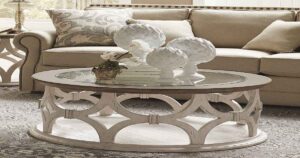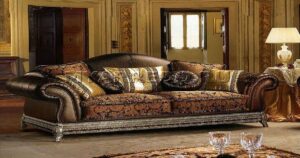When Did They Stop Using Horsehair In Furniture
When Did They Stop Using Horsehair in Furniture? A Comprehensive Guide
The use of horsehair in furniture, particularly in upholstery, has a rich history that dates back centuries. This material, prized for its durability and comfort, was a staple in the creation of high-quality furniture. However, as with many traditional materials and methods, the prevalence of horsehair in furniture has waned over time. This guide aims to provide a detailed exploration of when and why horsehair fell out of favor in the furniture industry, and what materials have taken its place.
The Historical Use of Horsehair in Furniture
Horsehair was widely used in furniture from the 18th century, through the 19th century, and into the early 20th century. It was particularly popular in Europe and North America, where it was used for padding and upholstery in seating furniture such as chairs, sofas, and even mattresses. The primary reason for its popularity was its unique combination of resilience and pliability, which allowed for comfortable, durable furniture that could withstand years of use.
The Decline of Horsehair Use
The decline in the use of horsehair in furniture can be attributed to several factors, with the most significant being the evolution of furniture manufacturing techniques and the introduction of synthetic materials. By the mid-20th century, synthetic fibers had become widely available and were quickly adopted by furniture manufacturers for several reasons:
- Cost-Effectiveness: Synthetic materials were often cheaper to produce and source than natural horsehair.
- Consistency and Availability: Unlike horsehair, which could vary in quality and was subject to the availability of the animals, synthetic fibers could be produced in large quantities with consistent quality.
- Maintenance and Durability: Synthetics offered easier maintenance and, in some cases, greater durability than natural horsehair, appealing to both manufacturers and consumers.
Despite these advantages, the transition away from horsehair was gradual, with traditionalists and luxury furniture makers continuing to use horsehair into the latter half of the 20th century. It wasn’t until the 1970s and 1980s that the use of horsehair in mainstream furniture production significantly diminished, as modern upholstery techniques and materials fully took hold.
Modern Alternatives to Horsehair
Today, a variety of materials are used in place of horsehair for furniture upholstery, including:
- Polyurethane foam: Now the most common padding material, it offers versatility and comfort in various densities and firmness levels.
- Polyester fibers: Used for their softness and resilience, polyester fibers can mimic the feel of down while providing durability and resistance to allergens.
- Memory foam: Known for its support and comfort, memory foam is often used in premium furniture and mattresses.
- Natural fibers: While less common, materials like wool, cotton, and even coconut fiber are used in eco-friendly or artisanal furniture pieces as sustainable alternatives to synthetic materials.
The Legacy and Modern Use of Horsehair
Despite its diminished role in mainstream furniture production, horsehair has not disappeared entirely from the industry. It continues to be used in high-end and bespoke furniture pieces where traditional craftsmanship and natural materials are prized. Horsehair is celebrated for its breathability, natural springiness, and its ability to conform to the user’s body, providing unmatched comfort and longevity that synthetic materials struggle to replicate fully.
Moreover, horsehair furniture is often sought after by antique collectors and enthusiasts of period-specific interiors. The material’s historical significance and unique qualities make horsehair-upholstered furniture a cherished item for those looking to capture the essence of a bygone era in their decor.
Conclusion
The use of horsehair in furniture has seen a significant decline from its peak in the 18th and 19th centuries due to advancements in materials science and changes in manufacturing processes. While it is no longer the staple material it once was, the legacy of horsehair in furniture lives on in the luxury and antique markets. Its decline marks a significant shift in the furniture industry from traditional natural materials to modern synthetic alternatives, reflecting broader changes in technology, economy, and consumer preferences. As we move forward, the story of horsehair in furniture serves as a fascinating chapter in the history of design and craftsmanship, reminding us of the enduring link between past practices and contemporary innovation.
Understanding the history and evolution of materials like horsehair in furniture not only enriches our appreciation of antique and luxury pieces but also offers insight into the changing dynamics of design, technology, and culture. As we continue to develop new materials and methods, the lessons learned from the use of horsehair can guide us towards creating sustainable, durable, and comfortable furniture for future generations.














